We go behind the scenes of a new exhibition opening at Chatsworth House today that celebrates 500 years of design history
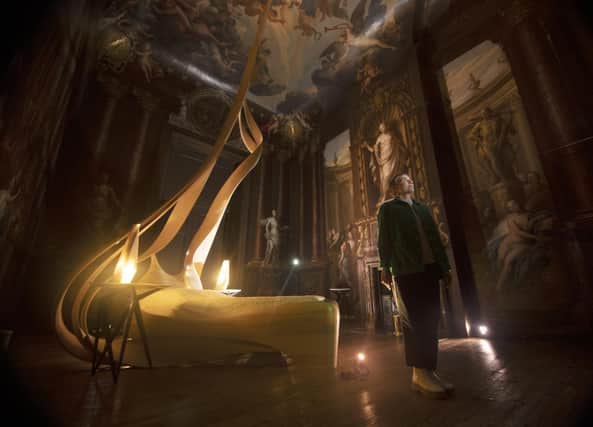

Co-curated with writer, historian and curator Glenn Adamson, the exhibition features 16 contemporary designers who put their works in direct relationship to the historic design at Chatsworth, creating unexpected connections with the house’s architecture, interiors, furniture and ceramics, as well its essential materials of glass, stone, wood and light.
Alex Hodby, senior curator of programme at Chatsworth, says: “We feel so lucky to have had Glenn on board. He has global knowledge of the history of design. Working with him was fantastic. It allowed us to think of Chatsworth as a space and how people view that space.“This project is a fantastic opportunity to reflect on the design histories at Chatsworth and bring them to the fore with an exciting array of international artists and designers. We’re fascinated with how the contemporary works in our exhibition have used materials in innovative ways to make functional and intriguing objects that are also deeply connected to the house, garden and the collections here at Chatsworth – a place where design has been a key feature for 500 years.”
Advertisement
Hide AdAdvertisement
Hide AdAs Glenn was based in the United States and the 16 artists scattered all over the world, with many therefore unable to visit Chatsworth, Zoom played a massive part. “The pandemic did mean that we are now all more confident with communicating via Zoom,” says Alex. “We created scans of the spaces so that we could share those with the designer. It was a massive collaborative process that has taken more than two years to come to fruition, but we are very excited about the end result, which is so much more than just another exhibition of works. I think it makes people look afresh at what Chatsworth actually is and also question what is design.”
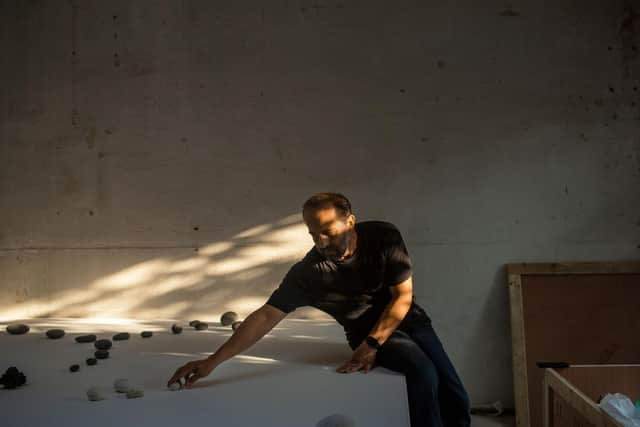

Some of the items on display were existing pieces, while others were designed specifically for Chatsworth, all on loan, so contemporary works sit alongside pieces collected by the family over the last 500 years.
Faye Toogood, a British artist working in a diverse range of disciplines, from sculpture to furniture and fashion, spent time in the chapel at Chatsworth to create her installation of sculptural furniture.
“Faye was totally blown away by the materials of that space and its spirituality. Her work in stone and bronze is reminiscent of ecclesiastical fittings, as well as a deeper local history of stone circles around Chatsworth, known through archaeological research,” says Alex.
Advertisement
Hide AdAdvertisement
Hide Ad“For the adjoining Oak Room, decorated in panelling bought and installed by the 6th Duke of Devonshire in the 19th century, Faye has designed a suite of objects in oak and bog oak, connecting directly with both the material of the room and its use as a gathering space – it links materials across time.”
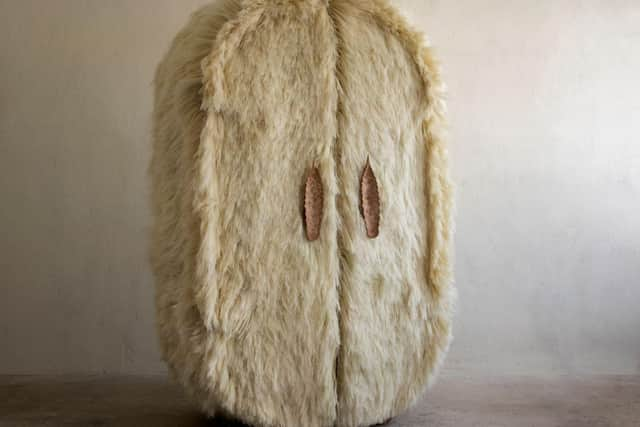

Michael Anastassidades is a Cypriot-born, London-based designer, known for his lithe yet commanding lighting structures. His installation of light in the library illuminates the room in depth, with fixtures made with slender uprights of bamboo and exposed bulbs set into bases of pooled metal. “It is hard to describe but Michael’s work is all about light but the way it illuminates the library is beautiful,” says Alex.
Italian design studio Formafantasma’s “Charcoal series” draws on the tension between the dystopian connotation of charcoal – its connections to pollution and destruction – and its positive potential, in contexts like healthcare and water purification. Works from this series are displayed in the Green Satin Room alongside paintings that feature the Chatsworth Estate, drawing parallels across moments in the landscape, and the materials and tools that can be wrought from it.
“We have taken a lot of time to brief our guides who already have an awful lot of knowledge. It was one of the guides that explained to me the importance of charcoal to the history of Sheffield. I had no idea before I spoke to her,” adds Alex.
Advertisement
Hide AdAdvertisement
Hide AdShe says Chatsworth has been lucky that the designers have taken the time to be involved in the project. “So many of them are also fashion designers and artists that have a lot of demands on their time. One such person is British artist, designer and multidisciplinary creative director Samuel Ross. Samuel works in stone and steel; their forms invite us to imagine the body that would recline on them. The raw and finished quality of the stone that he uses also has a strong relationship to the marble 19th century sculptures around them collected by the 6th Duke and it makes you realise that back in the 1830s, he was doing something very contemporary.”
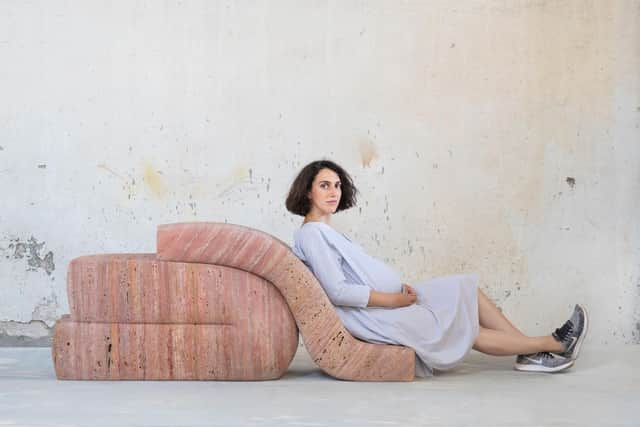

Other designers include US-born, Swiss-based Ini Archibong, whose chandelier Dark Vernus I hangs in the vestibule, a small space with a complex function.
Wendell Castle (1932-2018) was an American sculptor, furniture artist and leading figure in American craft. “His bronze seats echo the forms of the yew trees surrounding the historic Ring Pond, providing welcome spaces to sit while also entering into a dialogue with the stone stools, originally designed by William Kent for the garden at Chiswick – a connection across time to the origins of design as we understand it today,” says Alex.
Widely considered one of South Africa’s foremost ceramic artists, Andile Dyalvane’s work is an acknowledgement and celebration of his ancestral past, his heritage and community. At Chatsworth, the transformative nature of clay to ceramic is celebrated in works on display in the chapel corridor that are resonant with symbolism of fire, water and earth. They take their place in the rich history of ceramic collecting and commissioning over hundreds of years at Chatsworth – from historic Delftware to Edmund de Waal’s site-specific work, A Sounding Line.
Advertisement
Hide AdAdvertisement
Hide AdBritish artist Ndidi Ekubia creates visually stimulating yet functional silverware that pushes the craft of metal-raising to its limits. Her delicate series of silver vessels for the State Closet at Chatsworth are in dialogue with the monumental silver chandelier that dominates this intimate space, and more broadly, to the history of baroque ornamentation, in which material is given life through consummate craftsmanship.
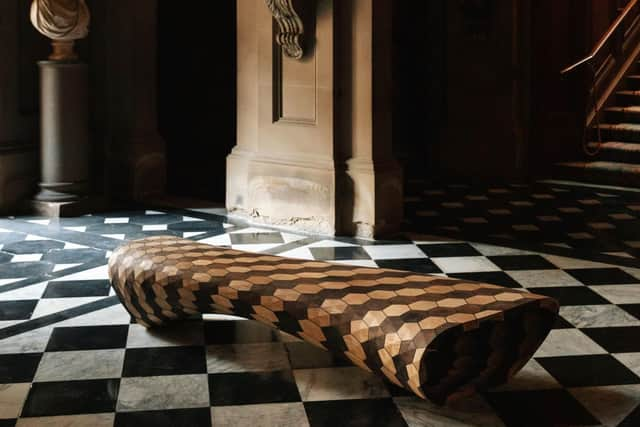

Beirut-born, Amsterdam-based designer Najla El Zein’s work explores the psychological potential of abstract form. The formality of the Rose Garden – its geometric planting and arrangement of columns and sculpture – provides an intriguing setting for El Zein’s Seduction Pair 06, a seating sculpture hand-carved in Iranian red travertine that conveys the sense of two bodies conjoined.
Dutch designer Joris Laarman uses new technologies to create functional, mathematically complex pieces that pay attention to the natural world around them.
British designer Max Lamb’s new work for the State Drawing Room is driven by research into the carving in the room, the stone used for the building, architectural details and the strong connections between them. Other designers’ work includes Fernando Laposse, Jay Sae Jung Oh, Filippo Albacini, Chris Schanck, Ettore Sottsass and Joseph Walsh.
Mirror Mirror: Reflections on Design at Chatsworth is in partnership with Friedman Benda gallery, with the support of Salon 94 Design and Adrian Sassoon galleries. www.chatsworth.org